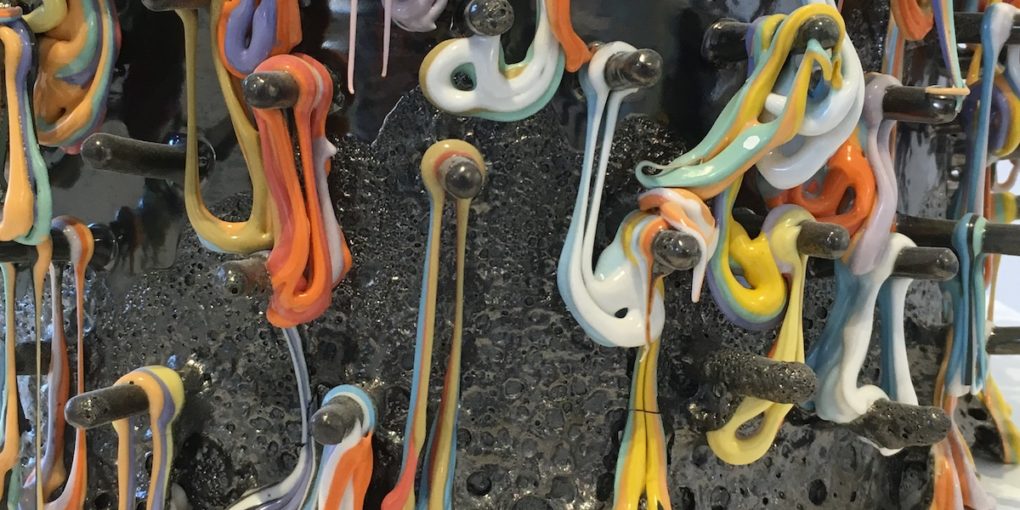Quarterly financial reports often portend the future. The retail apparel numbers are out for the first quarter of 2019, and they aren’t pretty. Sales dropped by 24 percent, the biggest decline since the first quarter of 2008, when they were a bellwether for the last recession. People aren’t buying clothing. Maybe some of them read my article about how Fast Fashion is contributing to climate change. If not, they should.
As I went through the list of clothing companies whose stocks are falling, I was amazed at how many were names unknown to me. Who are these people? I live in a fashion bubble, because here in the Berkshires, there is a dearth of shopping opportunities. The two closest malls or areas of promise are more than an hour away. There are a couple of mini malls, but they typically consist of four stores, including a dollar store, a vape shop, and two empties. And there are none where I can go mall walking.
Shopping is boring, and if you spend an hour and find nothing, frustrating. And expensive if you put a dollar value on your time. Considering that I never seem to be able to find clothing I like, and that also looks good, is it any wonder that I go to L.L. Bean or Lands’ End online to see what’s on sale. Find a company and size that always fits, and stick with it I say. Plus, I dislike shopping in general.
When we farmed in the hinterlands, essentials like underwear, jeans, and flannel shirts came from a catalog, generally J.C. Penney’s. When the kids heard the rumble of a delivery truck on the dirt road, it meant UPS or the Charles Chips man. They preferred the big metal cans of potato chips to new socks, and who could blame them. It was a godsend for me, sort of a precursor to online shopping.
One of the contributing factors to current low sales may be the rise of companies like Rent the Runway, where you plop down a substantial membership fee and then rent designer clothing for prices higher than most of us would pay for an outright buy. Other lines are following suit in an effort to gain a share of this market that appeals to the young. Traditionally, only the rich and famous wouldn’t be caught dead wearing the same outfit twice, but now a generation that has been mesmerized by the flash and pop of a wired culture also wants that newness of appearance, a fix that is fleeting.
Urban Outfitters and American Eagle are also setting up rental programs, ostensibly to help save the planet–you know, that fast fashion thing. The online resale shop thredUP similarly wrings its hands over how fashion is warming the planet. I’m all for buying used, but I gravitate toward tag sales and Goodwill. In my apartment complex, we have a “free table,” and with people of so many sizes and preferences, every item has been rehomed by a tenant or taken for friend who would like or need it. It’s all new to them.
I don’t buy it. Environmental degradation from any source is never addressed until the outcry is so loud that nothing else can be heard. We’ve been going down this path for decades, but only now, with social media and independent journalism, are we seeing a groundswell that will eventually lead to change. The failing stores are blaming everything from weather, to low mall traffic, to their own poor decisions. There is nowhere else for them to go but up onto the climate bandwagon. The unspoken threat is the slowing economy. Rental and resale businesses require less investment and overhead for things like storage space. These are the online “pop-up” shops of the day. Business is business, and that will never change.
In The State of Fashion 2019, a rigorous report (PDF) compiled by The Business of Fashion and McKinsey & Company, it is stated that “The lifespan of the fashion product is becoming more elastic as pre-owned, refurbished, repair and rental business models continue to evolve. Fashion players will increasingly tap into this market to gain access to new consumers seeking both affordability and a move away from the permanent ownership of clothing.” This new trend in fashion is compared to Netflix, ZipCar, and Spotify, each of which replaces ownership with rental. The report also looks at the broader questions of the global economy, trade, and market share.
Even the experts don’t seem to understand it. In a recent article for CNBC, analyst Craig Johnson is quoted as saying that classic women’s chains like Talbot and Chico’s are the hardest hit by changing buying trends. “The demand for that product is a fraction of what it used to be a generation ago. Women aren’t dressing like that.”
I beg to differ. Women are still dressing like that. They have a high regard for style and build wardrobes that reflect their tastes. They seldom buy on a whim, and the clothing they choose tends to be very well made. The buying habits of “a generation ago” or longer are built on experience and an understanding of quality. Don’t knock it.
For now, it’s a wait and see as to which will become the most popular method of filling our closets, buying or renting, but if the entire economy follows the apparel trend, we may not even have that choice to make.








